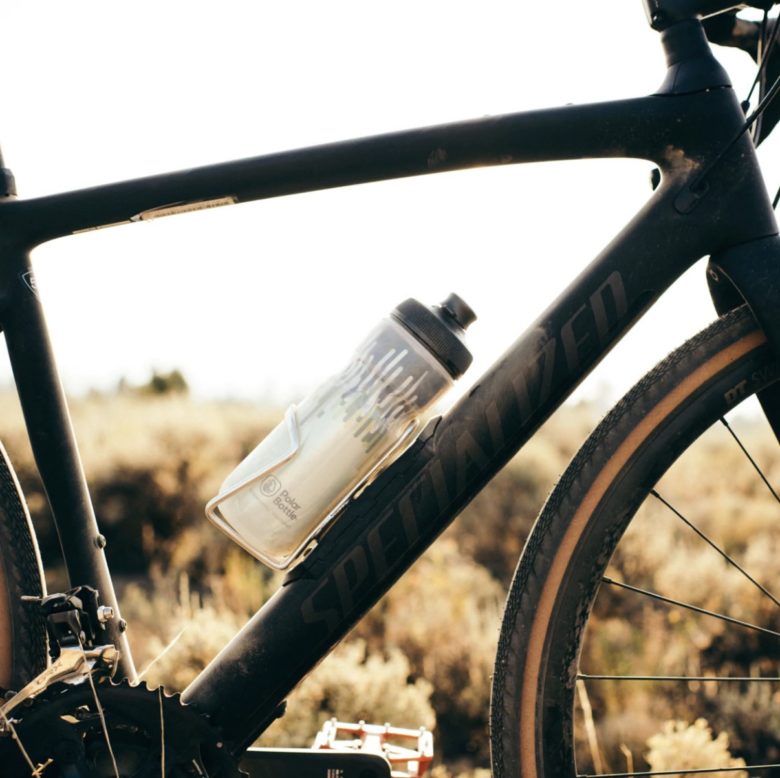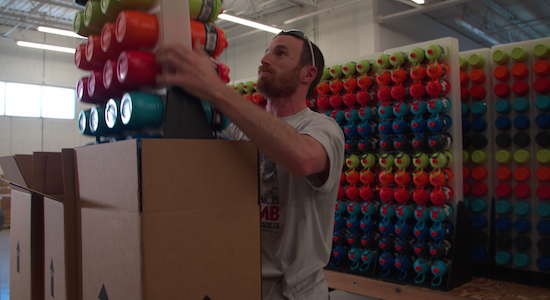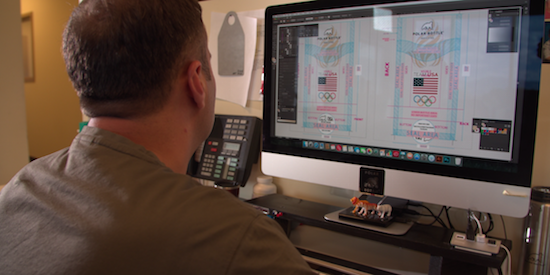
Based in Boulder, Colorado, Polar Bottle is bucking trends left and right. The company has found it’s simply good business to manufacture its sports water bottles in the U.S., pay its workers more than minimum wage, and find ways to significantly reduce its environmental impact – all while continually innovating and remaining competitive in the market.
Founded in 1994 as Product Architects, Inc. (Polar Bottle®) by Robert Heiberger and Judy Amabile, the company has since grown from a two-person start-up in a garage to a company that ships millions of sports bottles to 40 countries around the globe.
At the time Robert and Judy started the company, sports bottles for cyclists didn’t really exist. The bottles on the market, consisting of a single wall of stainless steel or other material, didn’t provide any means for keeping water cold (or at least at a drinkable temperature).
Cycling is an intense sport that requires the athlete to remain continuously hydrated, so having water readily available while riding is a must.
After finding his water hot yet again during one blistering ride, Heiberger, a thermal engineer and avid mountain bike rider, realized cyclists needed a specialized bottle: one that kept liquid cool, was easy to hold and squeeze, and that fit into the special “cage” (or water bottle holder) on the bike.
Thus was born Polar Bottle, the first patented, insulated, and squeezable water bottle.
Commitment to the local community
When asked why the company didn’t move production offshore in the early 2000s, Addie Bash, Marketing Manager, gave a number of reasons.
First, the company values its role in Boulder’s local economy. The manufacturer employs between 40 and 60 people, depending on the season. It also sources materials locally or stateside as much as possible.
“The plastic is sourced right here in Colorado, as well Garden City, Missouri,” says Addie. “The foil bag insulation comes from Utah. Our stainless steel bottle uses materials sourced overseas, but we’re actively looking for stateside suppliers. Even the cardboard for our shipping boxes is sourced locally.”

Due to these efforts, the company can price its products competitively – while still paying its employees a good working wage.
“We made a decision in 2011 to transition employees from $8 an hour to $12. While this decision would seemingly increase production costs, it didn’t. Many companies look at only the unit cost to produce something but don’t see the bigger picture.”
According to Addie, the company saves money on shipping and inventory management because it builds only what it sells. By producing its sports bottles domestically, Polar Bottle doesn’t have to submit large POs to international manufacturers — thereby reducing the risk of having too much extra stock if sales don’t meet expectations.
Recyclable bottles = less landfill
By keeping production in the U.S., and sourcing materials locally, the company has significantly reduced its environmental impact.
In addition, all of its plastic bottles can be used for years – which reduces the need for disposables – and they’re all recyclable, which keeps them out of landfills. (According to experts who track this stuff, roughly 50 billion single-use plastic bottles end up in landfills every year.)
When it’s time to replace a Polar Bottle, customers can mail in their old one and receive a 50% off coupon for a new one.
“We also send out hundreds of replacement caps at no charge every year,” says Addie. “This way, customers can continue to use their bottles instead of disposing of them simply because they lost the cap.”
Due to theses efforts and others, the company is a Green America® Certified Business.
Steady growth
The privately held company is still owned by Heiberger and Amabile, both of whom play key roles in day-to-day operations. Currently, the company plans on expanding into new markets, which includes its recent introduction of a full line of hot/cold insulated bottles and creating custom bottles.
One thing that makes these bottles unique is the foil insulation; not only does it help keep the liquid cool, it also ensures the printing doesn’t eventually chip or rub off, the way it would if it were on the outside of the bottle.
Because the company prints the art on the foil insulation in-house, they realized they could create custom bottles for retailers, cycling clubs, or events, which has opened a whole new market.

The company also gives back in myriad ways, such as producing the Olympic and Paralympic themed bottles (pictured at the top of this post).
According to Addie, a few of the U.S. Olympic teams purchased the bottles; for bottles purchased by consumers, a portion of the proceeds support athletic programs.
Consumers can purchase Polar Bottles online at the company’s website or through local retailers (which is were I found mine). The bottle’s design has been refined over the years and is incredibly easy to hold and squeeze while riding a bike. And yep, it does keep liquids cool.
